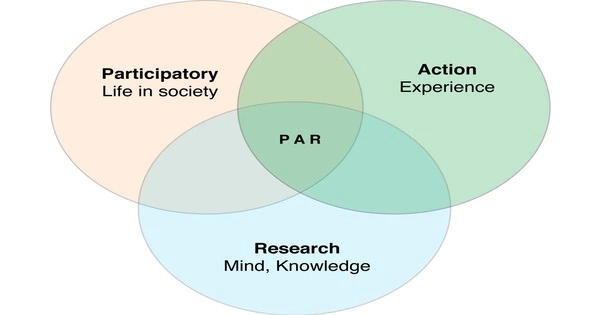Participatory action research (PAR) is an approach to action research that emphasizes participation and action by individuals of the communities affected by the research. PAR is a research approach and methodology that stresses collaboration and active participation of the persons being investigated in the research process. It aims to comprehend the world by attempting to change it jointly and in response to reflection. PAR is frequently utilized in domains such as social sciences, education, community development, and public health.
PAR values collaborative inquiry and experimentation based on personal experience and social history. It is a method of conducting research that tries to empower and engage people in the research process, especially from marginalized or disadvantaged areas, in order to solve social concerns and achieve positive change. Within a process known as PAR, “communities of inquiry and action evolve and address questions and issues that are significant for those who participate as co-researchers”.
Here are some key characteristics and principles of Participatory Action Research:
- Collaboration: PAR is based on a collaborative method in which researchers and participants collaborate as co-researchers. Throughout the study process, it fosters a sense of collaboration and shared decision-making.
- Empowerment: PAR seeks to empower participants by providing them a say in the development of research topics, methodologies, and outcomes. It frequently tries to increase participants’ capacity to take action on issues that affect their lives.
- Reflexivity: PAR researchers frequently engage in critical self-reflection to identify their own biases and their potential impact on the research process. This reflexivity helps to ensure that the research is ethical and socially responsible.
- Cyclic Process: PAR typically follows a cyclical process that includes problem identification, planning, action, and reflection. This cycle may repeat several times to address complex issues and evaluate the impact of actions taken.
- Action-Oriented: As the name suggests, PAR is action-oriented. It aims to generate knowledge and insights that can lead to practical actions and positive changes in the lives of the participants and their communities.
- Contextual Understanding: PAR emphasizes the importance of understanding the socio-cultural, economic, and political context in which the research takes place. This context informs the research design and the interpretation of findings.
- Mixed Methods: PAR research methods include surveys, interviews, observations, and participatory tools including community mapping and visual methods. Methods are frequently adaptable and tailored to the specific needs and preferences of the participants.
PAR differs from traditional research methods in that it emphasizes controlled testing, statistical analysis, and reproducibility of findings. It has been employed in a variety of situations, including community development and healthcare interventions, as well as school reform and environmental sustainability projects. It is a versatile and adaptable method that can be adjusted to the specific needs and aims of various research projects and communities.
















